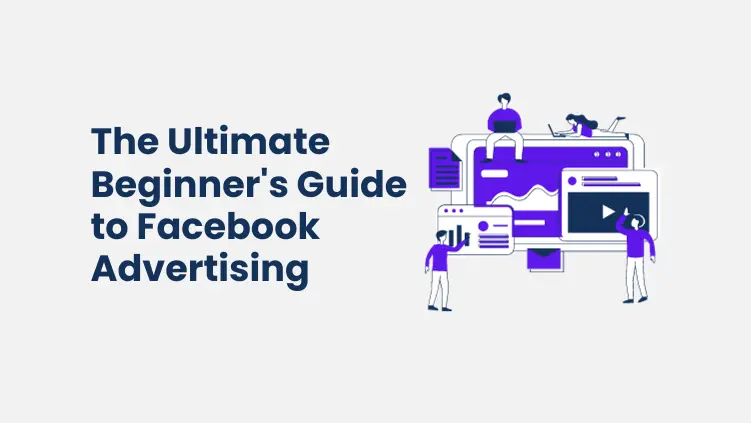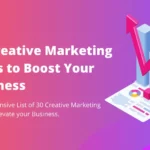Facebook advertising has become one of the most popular and effective ways for businesses to reach potential customers. With over 2.8 billion monthly active users, Facebook provides an unparalleled platform to get your brand and products in front of a massive audience.
This beginner’s guide will navigate you through the ins and outs of Facebook advertising, with insights backed by relevant statistics and diverse perspectives.
Introduction to Facebook Advertising
Facebook Advertising, often referred to as Facebook Ads, is an advertising platform provided by Facebook that allows businesses to promote their products and services to a highly targeted audience. These ads can appear in various formats, such as image ads, video ads, carousel ads, and more. The beauty of Facebook Advertising lies in its ability to reach users not only based on demographic data but also on their interests, behaviors, and online activity.
Setting up Your Facebook Business Manager
Before you can start creating compelling Facebook Ads, you need to set up your Facebook Business Manager account. This central hub allows you to manage your ad accounts, Pages, and the people who work on them, making it easier to collaborate with team members and external partners. To create a Business Manager account, follow these steps:
- Visit business.facebook.com and click “Create Account.”
- Enter your business name, your name, and your business email.
- Follow the prompts to add your business details, connect your business Page, and assign team members.
Understanding Facebook Ad Types
To create effective Facebook Ads, it’s crucial to understand the various ad types available. Here’s a quick overview of some of the most popular ad formats:
1. Image Ads
Image ads are simple yet effective. You can use a single image to convey your message. Make sure the image is eye-catching and relevant to your target audience.
2. Video Ads
Video ads allow you to engage your audience with moving visuals. You can tell a story, showcase your product in action, or provide valuable insights through video.
3. Carousel Ads
Carousel ads enable you to display multiple images or videos in a single ad. Users can swipe through the carousel to see different offerings or aspects of your product.
4. Slideshow Ads
Slideshow ads are an excellent option if you don’t have video content. Create a slideshow using a series of images, add text, and music to engage your audience.
5. Collection Ads
Collection ads are perfect for e-commerce businesses. They let you showcase a series of products, and when users click, they’re taken to a full-screen shopping experience.
Targeting Your Audience
The strength of Facebook Advertising lies in its ability to target specific audiences. You can create highly granular target groups based on demographics, location, interests, behaviors, and even life events. Here are some key factors to consider when defining your audience:
1. Demographics
Specify age, gender, language, and relationship status to reach the right people.
2. Location
Narrow down your target audience by location, from entire countries to a specific radius around your business.
3. Interests
Select interests related to your product or service, allowing you to reach people who are likely to be interested in what you offer.
4. Behaviors
You can target users based on their past behaviors, such as purchase history and device usage.
Crafting Engaging Ad Copy
Compelling ad copy is the heart and soul of your Facebook Ads. To make your ad stand out, follow these tips:
- Hook Your Audience: Begin with a captivating headline that grabs attention. Highlight the value or solution your product offers.
- Use Concise Language: Keep your ad copy concise and to the point. Avoid jargon and use plain language that everyone can understand.
- Include a Clear CTA: Your Call to Action (CTA) should be clear and compelling. Whether it’s “Shop Now,” “Learn More,” or “Sign Up,” make it enticing.
- Add Social Proof: Mention customer reviews, ratings, or testimonials to build trust with potential customers.
- A/B Testing: Experiment with different ad copy to see what resonates best with your audience. Facebook allows you to run A/B tests to optimize your ads continuously.
Budgeting and Bidding
When setting up your Facebook Ad campaign, you’ll need to decide on your budget and bidding strategy. Facebook offers various bidding options, including:
- Daily Budget: This is the maximum amount you’re willing to spend per day on your ad campaign.
- Lifetime Budget: You can set a total budget for your campaign, which Facebook will spend over the lifetime of your ad.
- Bidding Strategy: Choose between automatic or manual bidding. Automatic bidding lets Facebook optimize your ad delivery to get the best results, while manual bidding gives you more control.
Measuring and Optimizing Your Ads
To ensure the success of your Facebook Advertising campaigns, it’s essential to regularly measure and optimize your ads. Facebook provides a wealth of data and insights to help you make informed decisions. Key metrics to monitor include:
- Click-Through Rate (CTR)
- Conversion Rate
- Ad Relevance Score
- Return on Ad Spend (ROAS)
- Cost per Click (CPC)
Optimize your ads based on these metrics, making necessary adjustments to improve your campaign’s performance.
Conclusion
Facebook Advertising is a dynamic and ever-evolving field that can significantly boost your business’s online presence and customer engagement. This beginner’s guide has provided you with essential insights and strategies to create successful Facebook Ads. By understanding ad types, targeting your audience effectively, crafting compelling ad copy, managing your budget, and measuring your campaign’s performance, you can take full advantage of this powerful advertising platform.
Remember, the key to success in Facebook Advertising is continuous learning and adaptation. Stay updated with the latest trends and algorithm changes to keep your campaigns fresh and effective.






